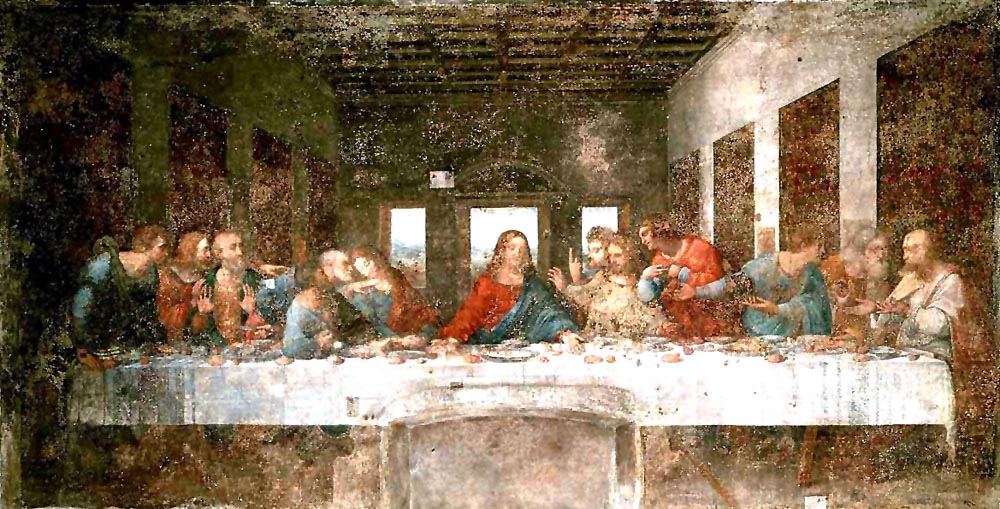Medieval Art


 There were eight artistic movements: Byzantine, Islamic, Viking, Carolingian, Celtic, Ottonian, Romanesque, and Gothic art. Medieval art represents the popularity of Christianity. Since the Bible prohibited graven images, artists avoided sculptures that could be viewed from all around and tended toward one dimensional art. Islamic art was known for tessellated patterns, depiction of heaven as a flowering place, geometric forms, and calligraphy. The vikings excelled in wood and metal work , and golden brooches were common. During the Carolingian period, many extravagant churches with luxuries were created. Contrary to Byzantine art, Carolingian art used human forms. Illuminated manuscripts of religious texts were common for artists to embellish in. Celtic art was influenced by geometry and animal depictions. Ottonian art took on a Germanic style. Romanesque architecture gained popularity by 1000 AD. Frescos and reliefs were common on church walls. Inspired by painter Giotto, Gothic art was more realistic than its predecessors. Key change in architecture was incorporation of sculptures as architectural elements.
There were eight artistic movements: Byzantine, Islamic, Viking, Carolingian, Celtic, Ottonian, Romanesque, and Gothic art. Medieval art represents the popularity of Christianity. Since the Bible prohibited graven images, artists avoided sculptures that could be viewed from all around and tended toward one dimensional art. Islamic art was known for tessellated patterns, depiction of heaven as a flowering place, geometric forms, and calligraphy. The vikings excelled in wood and metal work , and golden brooches were common. During the Carolingian period, many extravagant churches with luxuries were created. Contrary to Byzantine art, Carolingian art used human forms. Illuminated manuscripts of religious texts were common for artists to embellish in. Celtic art was influenced by geometry and animal depictions. Ottonian art took on a Germanic style. Romanesque architecture gained popularity by 1000 AD. Frescos and reliefs were common on church walls. Inspired by painter Giotto, Gothic art was more realistic than its predecessors. Key change in architecture was incorporation of sculptures as architectural elements. Gothic Art
 From France, Gothic art made cathedrals and stained glass windows larger than ever before. It strayed from imitations of classical Roman art. Gothic style was influenced by Romanesque style; however, Gothic cathedrals were very high unlike the short and wide ones in Romanesque. Distinctive traits of Gothic art were the ribbed vault, flying buttress, and pointed arch. Architectures competed to build cathedrals taller and taller. The French cathedral of Saint Denis is the best known model of Gothic cathedrals. It served as burial place for kings. The naturalistic style remained dominant. Stained glass window in Gothic design was known as the rose window. Illuminated manuscripts were highly decorated with intricate borders, and the most famous artists of these were the Limbourg brothers, known for painting Jean de France's Book of Hours. Christ was always symbolized as the lamb in these books. Calligraphy remained predominant in all Gothic art.
From France, Gothic art made cathedrals and stained glass windows larger than ever before. It strayed from imitations of classical Roman art. Gothic style was influenced by Romanesque style; however, Gothic cathedrals were very high unlike the short and wide ones in Romanesque. Distinctive traits of Gothic art were the ribbed vault, flying buttress, and pointed arch. Architectures competed to build cathedrals taller and taller. The French cathedral of Saint Denis is the best known model of Gothic cathedrals. It served as burial place for kings. The naturalistic style remained dominant. Stained glass window in Gothic design was known as the rose window. Illuminated manuscripts were highly decorated with intricate borders, and the most famous artists of these were the Limbourg brothers, known for painting Jean de France's Book of Hours. Christ was always symbolized as the lamb in these books. Calligraphy remained predominant in all Gothic art.
Devalued the dark medieval traditions in favor for renewal of ancient Greco-Roman culture. Michelangelo, Raphael, Leonardo Da Vinci were among the most famous Renaissance artists. A complete shift from medieval ideas, the Renaissance valued personal responsibility and knowledge. Major features of Renaissance art were realistic scenery, linear perspective, and chiaroscuro, contrast between light and dark paints. With the new concept of perspective, once flat images could be mathematically positioned and allow for more dimension and depth. Masaccio's Holy Trinity was the first to use perspective to accurately represent a space. The Church and the Medici family in Italy patronized artists to replace Byzantine mosaics with lively mythological and biblical sculptures and paintings. Masaccio, Donatello, da Vinci, and Michelangelo were patronized by the Medicis. One of the most famous paintings in the world is da Vinci's Last Supper. Michelangelo created the famous ceiling of the Sistine Chapel. A rival sculptor, Raphael, decorated the walls of the Vatican Library, featuring the School of Athens.





No comments:
Post a Comment